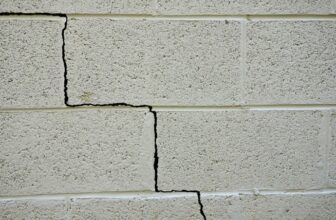
If you are planning on installing stone pavers on your driveway or walkway, you need to know a few things first. In this article, you will learn how to prepare a sub-base for stone paver installation, edge restraints, and expansion joints. This will help you avoid costly mistakes and ensure everything goes smoothly.
Preparing
The first step is to prepare a sub-base that will support the weight of the bricks or slabs. This can be done in a few different ways. The first way involves excavating enough ground to provide a solid base. It is important to consider how much material to use when preparing a sub-base, because you want to choose the right amount.
Crushed stone is a great choice for this purpose, as it is relatively easy to work with. Crushed stone is available in many different grades and types, so you can choose the right one for your project. The best type of crushed stone for a paver base is quarry processed dense grade aggregate (https://en.wikipedia.org/wiki/Construction_aggregate), which is made up of 3/4-inch crushed stone dust.
There are also alternatives to crushed stone. You can use recycled concrete aggregate (RCA). To make the material, you will need to break down the existing concrete to gravel. This method is more energy-efficient than mining virgin aggregate. RCA is similar to crushed stone in terms of function, but there are a few differences.
In order to ensure a proper placement and implementation of materials, you need to prepare the sub-base properly. You should ensure that the sub-base is sloped slightly, so that it prevents water from collecting and soaking into the stone. This method is ideal for preventing water from affecting the paver installation, and it also keeps the water away from the home.
Expansion Joints
The expansion joints are the spaces between the bricks and the wall. They are filled with a flexible sealant, commonly called caulk, to prevent cracks. These joints must be made of material that can withstand weather conditions and foot traffic. Expansion joints are essential in outdoor brickwork installation, but they are also necessary indoors.
The expansion joints are often put in place before the concrete is poured. The reason for this is that the expansion joints give the concrete a place to expand and contract without stressing adjacent structures. Ideally, the expansion joints should be made of pliable material and extend the entire width of the slab. Exterior expansion joints should be sealed with a quality urethane caulk to prevent frost damage.
Expansion joints should be at least 3/4 inch wide and spaced at least 12 feet apart. This is because cementations grout tends to harden and become brittle. It is also important to keep in mind that expansion joints should extend beyond the grout line, so that they align with saw cut control joints in the concrete base slab.
The depth and location of expansion joints is dependent on the specific soil conditions. The control joints should be at least 1/8 inch wider than the expansion joints. These must be spaced eight to twelve feet apart. It is also important to remember that these joints should be at least 1/4 inch deeper than the concrete pads.
Edge Restraints
Installing edge restraints during stone-paver installation will help prevent pavers from rolling off the edge of the patio. There are many types of edge restraints, including PVC, aluminum, concrete, and pressure-treated wood. Concrete curbs are a great option, as they are durable and add an accent to the paving stone. Installing edge restraints is a relatively simple process, as long as you follow some basic guidelines.
One type of edge restraint is the plastic edge unit. These units are inserted into the concrete mix before pavers are installed. Plastic edge restraints are typically installed with a 10” spike. Perm Edge is another option, as it incorporates a mesh-like system called georgic, which prevents the pavers from sliding off the edge.
The edge restraints can be installed flush with the paving stone surface, or slightly below. They may be attached to the stone edging units, or they may be used as a backfill in the area. It is important to use care when installing these edge restraints to ensure that they don’t cut the pavers or anything else that may be dangling down in front of any rotating machinery.
Cost
There are many factors that affect the cost of installing brickwork. For example, whether the installation by your Glendale Paver Company will be done in a driveway or on a patio, the type of stone used, and drainage issues can all affect the price. The square footage of the project also matters, and some companies include extra features in their prices.
Some factors that affect the cost of the full installation include delivery fees, which range from $0.05 to $0.20 per square foot, and labor. The cost of labor will increase if you live in an area with limited access. Another factor that influences the cost of labor is whether the contractor is licensed and insured.
The cost of brickwork installation will vary greatly, depending on the size and complexity of the job. For example, a walkway in a garden may cost anywhere from $900 to $2,000. Slate patio pavers, on the other hand, can be installed for an average price of $15 to $20 per square foot. They are typically square or rectangular, and are ideal for patios around a pool.




